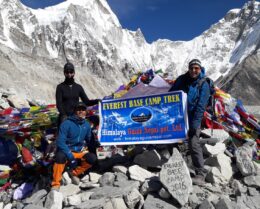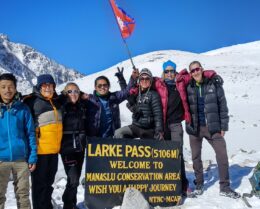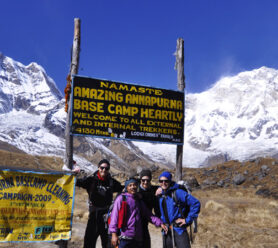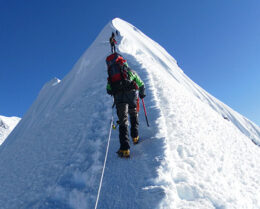The Ultimate Guide to Upper Mustang Trek
UPDATED ON 23 July, 2023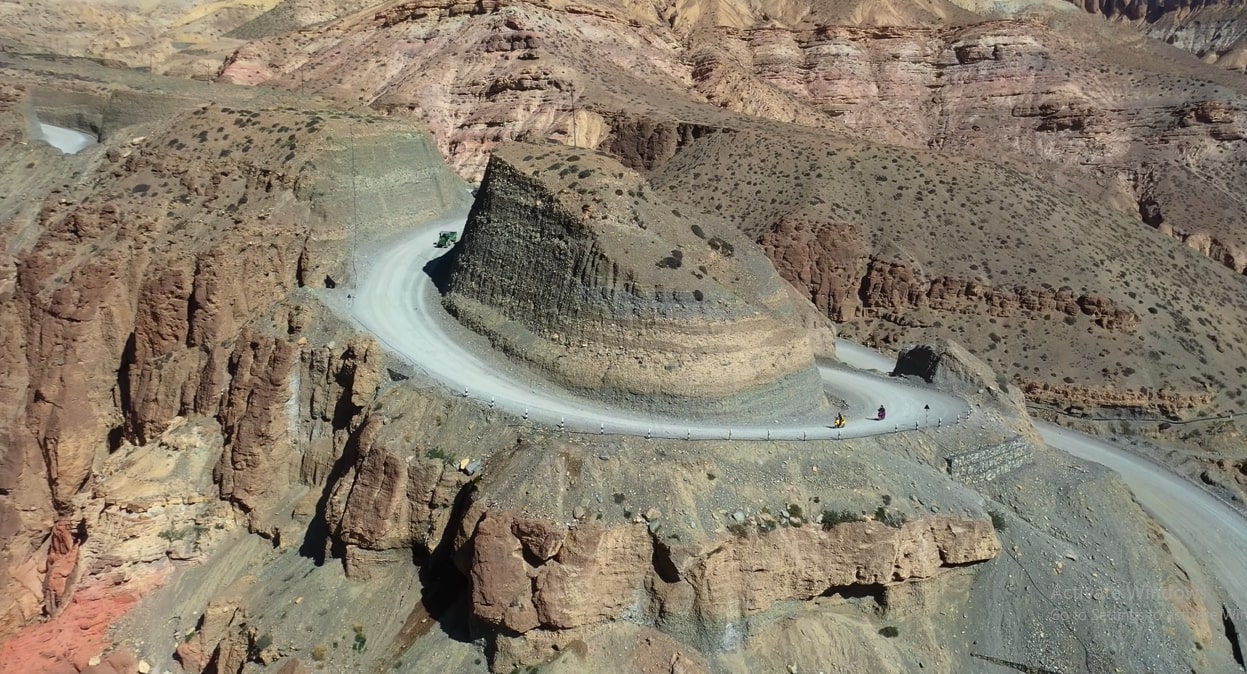
Seeking a unique trekking experience? Are you an adventurous soul? Well, the Nepalese Upper Mustang Trek is the only option for you. Nestled in the rain shadow of the Annapurna and Dhaulagiri mountain ranges, the Upper Mustang region offers breathtaking landscapes, ancient Tibetan Buddhist culture, and, moreover, the chance to explore the hidden kingdom of Lo. Planning to embark on the Upper Mustang Trek?
In this ultimate guide, we will take you through everything you need to know, from the trekking permit process to the highlights along the way.
Overview
The Upper Mustang Trek in Nepal offers a unique and captivating trekking experience. Moreover, this remote and restricted region, known as the “Forbidden Kingdom”, is nestled in the rain shadow of the Annapurna and Dhaulagiri ranges, creating a distinct landscape and cultural ambiance.
Furthermore, with its ancient walled city of Lo-Manthang, traditional Tibetan Buddhist culture, breathtaking landscapes, and the opportunity to witness the Tiji Festival, the Upper Mustang Trek is a journey that combines adventure, history, and spirituality.
While requiring a special permit and offering moderate challenges, this trek rewards trekkers with an unforgettable exploration of a hidden gem in the Himalayas.
If You want to visit this Upper Mustang, make a reservation right now.: Book Now
Understanding Upper Mustang
The Kingdom of Lo
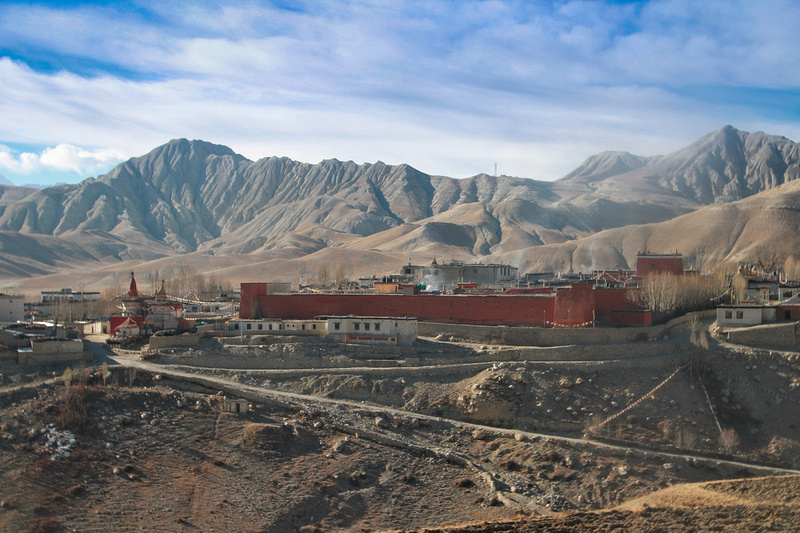
Famous as the “Forbidden Kingdom,” Upper Mustang was once an independent kingdom and is rich in history and culture. The region was opened for trekking in 1992, but it still remains a restricted area. Trekking in this remote region provides a sense of adventure and exploration that is hard to find elsewhere.
Rain Shadow Effect
Located behind the mighty Himalayas, Upper Mustang falls in the rain shadow, resulting in a dry and arid landscape. This unique geographical feature adds to the allure of the trek, offering a stark contrast to the lush greenery found in other parts of Nepal.
Upper Mustang Trek Itinerary
Pokhara to Jomsom
The trek starts with a scenic flight from Pokhara to Jomsom, a small town in the Mustang region. The flight itself offers stunning views of the Annapurna and Dhaulagiri ranges, giving you a taste of the awe-inspiring beauty that awaits you.
Jomsom to Kagbeni
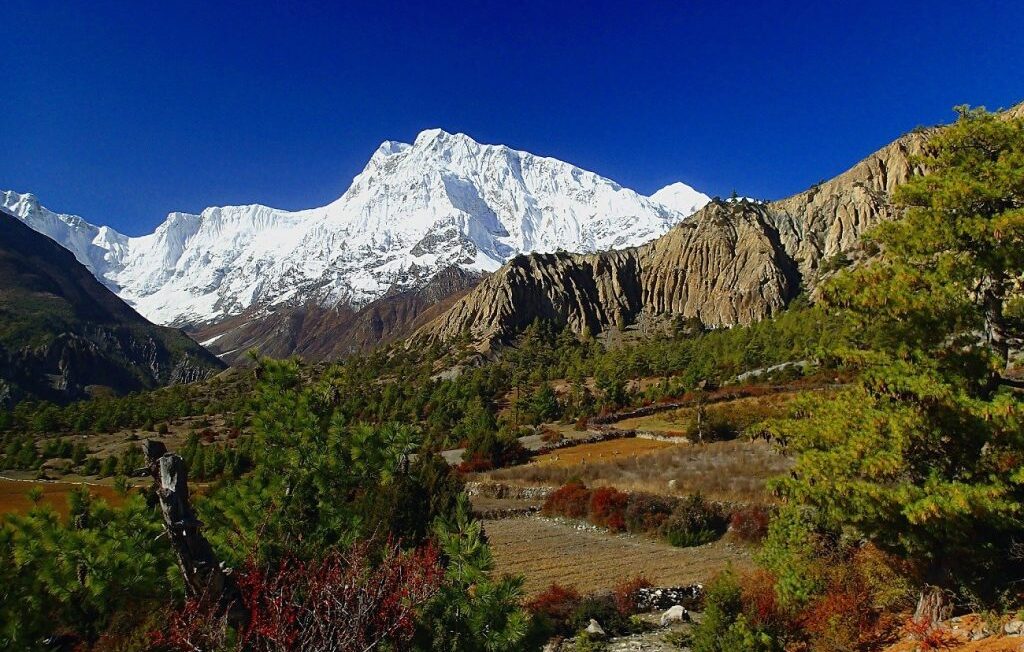
The trek begins with a walk from Jomsom to Kagbeni, a picturesque village situated at the confluence of the Kali Gandaki and Mustang rivers. The trail takes you through charming villages, across suspension bridges, and along the banks of the river.
Kagbeni to Chele
As you continue your trek, the trail gradually ascends, leading you from Kagbeni to Chele. Along the way, you will pass through beautiful landscapes, barren hills, and ancient caves. Those were once used by monks for meditation.
Chele to Syangboche

The trekking trail becomes more rugged as you make your way from Chele to Syangboche. This section of the trek offers breathtaking views of the surrounding mountains and the Kali Gandaki River, which winds its way through the deep valley below.
Syangboche to Charang
Continuing the trek, you arrive at Charang, a village known for its ancient monastery and rich cultural heritage. Here, you can explore the intricately carved stone walls of the monastery and immerse yourself in the Tibetan Buddhist culture that permeates the region.
Charang to Lo-Manthang
The highlight of the trek, Lo-Manthang, is a walled city and the former capital of the Kingdom of Lo. As you enter the city, you will see narrow alleys, whitewashed houses, and a vibrant local culture that has remained largely untouched by modernization.
Trekking Permits
Restricted Area Permit (RAP)
As Upper Mustang is a restricted area, trekkers need to obtain a Restricted Area Permit (RAP) from the Department of Immigration in Kathmandu or through a registered trekking company. Moreover, this permit is essential and helps regulate the number of visitors to the region, preserving its unique cultural and environmental heritage.
Trekking Permit
In addition to the RAP, trekkers also need to obtain the Annapurna Conservation Area Permit (ACAP) and the Trekkers’ Information Management System (TIMS) card. These permits contribute to the conservation efforts in the Annapurna region and provide valuable information for trekker safety.
High Altitude Considerations
Acclimatization
Due to the high altitude of the Upper Mustang region, proper acclimatization is essential. It is recommended to spend a day or two in Lo-Manthang. It allows your body to adapt to the altitude before further exploration. This will help minimize the risk of altitude-related illnesses and ensure a safer and more enjoyable trekking experience.
Altitude Sickness
Trekkers need to be aware of the signs of altitude sickness and adopt the appropriate safety measures. It is advisable to consult with a healthcare professional before embarking on the trek and to follow a gradual ascent profile, allowing your body to adjust to the increasing altitude.
Tea Houses and Accommodation in Upper Mustang Trek
Tea Houses
Along the trekking routes, you will find several tea houses offering basic accommodations and meals. These tea houses provide a cozy place to rest and refuel during your journey. The friendly hospitality of the locals and the warm atmosphere of these tea houses make them an integral part of the trekking experience in Upper Mustang.
Packing Essentials
As the tea houses provide only basic facilities, it is important to pack essentials like a warm sleeping bag, comfortable hiking boots, layers of clothing to adapt to changing weather conditions, and a good quality backpack to carry your belongings.
Highlights of the Upper Mustang Trek
La Pass
Crossing the challenging La Pass, located at an altitude of around 4,000 meters, is a thrilling experience offering panoramic views of the surrounding mountains. The sense of achievement upon reaching the pass is truly rewarding and provides a vantage point to soak in the beauty of the Himalayas.
Tiji Festival
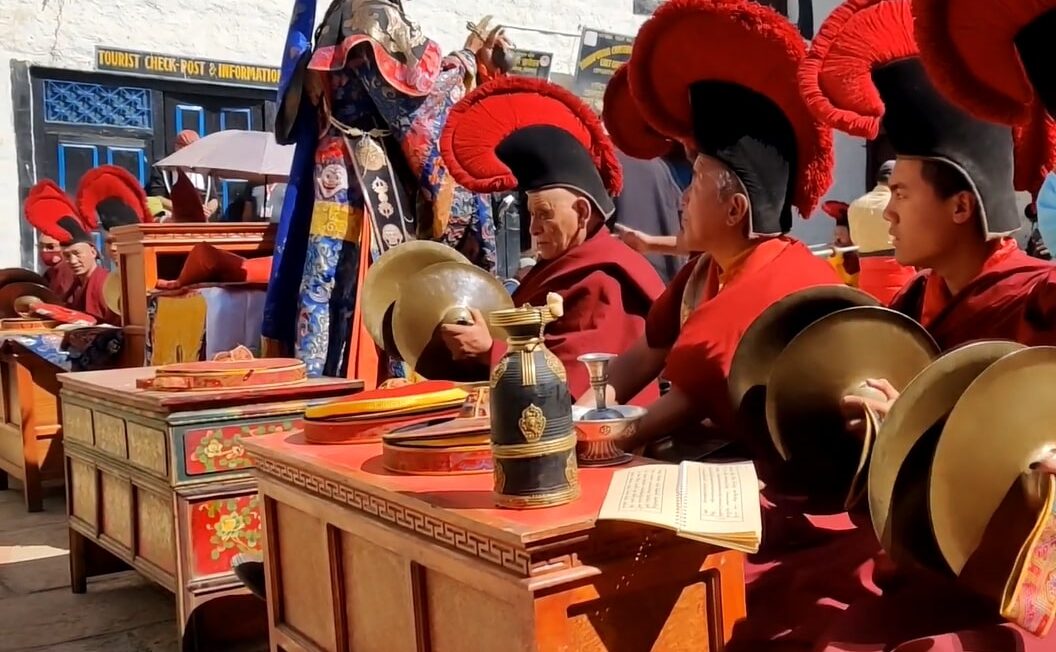
If you plan your trek during May, you have the opportunity to witness the vibrant Tiji Festival in Lo-Manthang. This three-day festival showcases traditional dances, music, and rituals, providing a glimpse into the ancient cultural practices and beliefs of the region.
Tibetan Buddhist Culture
The Upper Mustang region has a deep Tibetan Buddhist cultural influence. Throughout the trek, you can explore ancient monasteries, interact with local monks, and learn about the rich cultural heritage that has been preserved for centuries. The prayer flags fluttering in the wind, the sound of chanting, and the scent of incense create a spiritual ambiance that is truly captivating.
Choosing a Trekking Company
Research and Recommendations
Before selecting a trekking company, it is important to do thorough research and read reviews from previous trekkers. Seek recommendations from fellow travelers or consult with a reputable travel agency. This will help ensure that you choose a company that values safety, provides experienced guides, and has a good track record of organizing successful treks.
Experienced Guides and Porters
To ensure a successful trekking experience, it is crucial to choose a trekking company that provides experienced guides and porters who are well-versed in the region, its culture, and safety protocols. Additionally, having knowledgeable guides and porters can greatly enhance your trekking experience.
They can provide valuable insights, assist with logistics, and, most importantly, ensure your safety throughout the journey.
What will you come across in the upper Mustang trek?
During the Upper Mustang Trek, you will come across a variety of remarkable sights and experiences. Here are a few highlights you might anticipate seeing:
Scenic Landscapes
The Upper Mustang region is famous for its stunning landscapes. As you trek through the arid and rugged terrain. You will witness majestic mountains, deep canyons, barren hills, and dramatic rock formations. The contrasting colors and textures of the landscape create a visually captivating journey.
Ancient Walled City of Lo-Manthang
One of the main highlights of the Upper Mustang Trek is, without a doubt, the ancient walled city of Lo-Manthang. Furthermore, this historical and cultural hub served as the capital of the Kingdom of Lo. As you venture through the narrow alleys and admire the whitewashed buildings, you will be delighted to discover ancient monasteries, royal palaces, and traditional mud-brick houses.
Additionally, the well-preserved architecture and the rich heritage of the city offer a captivating glimpse into the region’s glorious past.
Traditional Villages and Local Communities
Along the trekking route, you will come across traditional villages inhabited by the friendly and hospitable people of Upper Mustang. Additionally, these communities have admirably retained their unique traditions and way of life for generations.
Interacting with the locals not only offers a warm and enriching experience but also provides a valuable opportunity to learn about their daily routines, agricultural practices, and cultural customs.
Kali Gandaki River and Gorges
The trek, first and foremost, takes you along the banks of the Kali Gandaki River, known as one of the world’s deepest gorges.
Additionally, the river gracefully flows between the Annapurna and Dhaulagiri mountain ranges, presenting breathtaking views and a sense of awe-inspiring grandeur.
Moreover, crossing suspension bridges over the river adds an exhilarating element of adventure to your journey.
Tiji Festival (Seasonal)
If you time your trek during May, you may have the chance to witness the Tiji Festival in Lo-Manthang. This vibrant three-day festival celebrates the victory of good over evil and features masked dances, music, and cultural performances. The festival provides a unique insight into the religious and cultural traditions of the region.
Wildlife and Natural Beauty
Despite the arid landscape, the Upper Mustang region is home to diverse flora and fauna. You may spot rare species such as snow leopards, Himalayan blue sheep, Tibetan gazelles, and various bird species. The rugged beauty of the region, with its unique rock formations and wide-open spaces, creates a sense of tranquility and harmony with nature.
These are just some of the highlights you can expect during the Upper Mustang Trek. The combination of breathtaking landscapes, ancient culture, and the remote and untouched nature of the region makes it an extraordinary adventure that will leave a lasting impression.
You May Be Interested In:
- Discovering The Hidden Treasures Of Upper Mustang: A Trek Through The Enchanting Kingdom
- Everest View Trek
- Trekking Peak In Annapurna Region’s Pisang Peak Climbing
FAQs
Will you require a special permit for the Upper Mustang Trek?
Indeed, a special permit known as the Restricted Area Permit (RAP) is required for the Upper Mustang Trek. Furthermore, this permit can be obtained either directly from the Department of Immigration in Kathmandu or through a registered trekking company.
When would be the ideal time to go on the Upper Mustang Trek?
The best time to go on the Upper Mustang Trek is during the spring (April to June) and autumn (September to November) seasons when the weather is stable, the skies are clear, and the temperatures are moderate.
Trekking during the monsoon season (July to August) is also possible as Upper Mustang is in the rain shadow and experiences less rainfall.
How difficult is the Upper Mustang Trek?
The Upper Mustang Trek, in all its splendor, is indeed moderately difficult. Moreover, it involves walking for several hours each day, navigating varied terrains, and crossing high-altitude passes.
Therefore, good fitness and prior hiking experience are highly recommended. Additionally, acclimatization and a gradual ascent profile are essential to ensure a safe and enjoyable trekking experience.
Are there tea houses or accommodation facilities available along the trekking route?
Yes, there are tea houses and accommodation facilities available along the Upper Mustang trekking route. These tea houses offer basic amenities such as rooms, dining areas, and meals. However, facilities may be more basic compared to popular trekking routes like the Annapurna Circuit. It is advisable to carry a warm sleeping bag and other essentials.
Do I need a guide for the Upper Mustang Trek?
While not mandatory, it is highly recommended to hire a guide for the Upper Mustang Trek. Especially for inexperienced trekkers or those unfamiliar with the region. A guide provides valuable insights, assists with navigation, ensures safety, and helps with communication.
Hiring a guide also supports the local economy and enhances the trekking experience.
Conclusion
Embarking on the Upper Mustang Trek is like stepping into a world frozen in time. The captivating landscapes, rich cultural heritage, and the warmth of the local people make it an unforgettable adventure. As you traverse the ancient kingdom of Lo, immerse yourself in the Tibetan Buddhist culture, and conquer the high-altitude challenges, you will undoubtedly create memories to last a lifetime.
So, pack your bags, obtain the necessary permits, and get ready to explore the mystical realm of the Upper Mustang.

